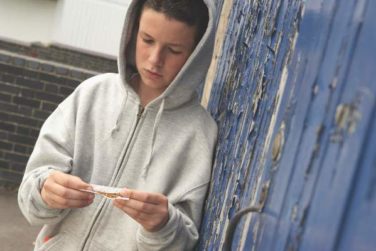AT THE NATIONAL IMMUNIZATION CONFERENCE
ATLANTA (FRONTLINE MEDICAL NEWS) – While there is no question about the need to address pockets of increasing vaccine refusals, determining how to address it requires a better understanding of the forces underlying vaccine hesitancy.
This area of research is still young, but Glen Nowak, PhD, a visiting communication scientist at the National Vaccine Program Office and director of the Grady College Center for Health & Risk Communication at the University of Georgia in Athens, drew on multiple recent studies and an in-progress review of vaccine hesitancy and confidence literature to distill five key findings from recent research into vaccine hesitancy. He presented that summary at a conference sponsored by the Centers for Disease Control and Prevention.
The first insight: There is a lot of interest in understanding vaccine hesitancy and confidence. But the rub is that many inconsistencies and uncertainties exist, because efforts remain in the early stages of research.
Dr. Nowak referenced the November 2014 report of the World Health Organization’s Strategic Advisory Group of Experts (SAGE) on Immunization to define vaccine hesitancy as the “delay in acceptance or refusal of vaccines despite availability of vaccine services.” But that hesitancy is complex and context specific, varying across time, place, and type of vaccine, the report found.
Those who are hesitant about vaccines are not a homogeneous group, Dr. Nowak said. Their degree of indecision ranges from refusing all vaccines, refusing some and accepting others, or delaying some but not others, to full acceptance of all vaccines despite hesitancy. Their attitudes also vary about vaccination overall and about specific vaccines.
“Vaccines hesitancy is influenced by several factors: complacency, convenience, and confidence,” Dr. Nowak said.
“Generally speaking, the end goal of all of our efforts is vaccine coverage, and before that is vaccine acceptance,” he said. “Before acceptance is hesitancy, and confidence is considered the precursor to hesitancy.” But no clear definition or measure of “vaccine confidence” exists yet.
Dr. Nowak next highlighted the second key finding: that research has identified an association between vaccine hesitancy or vaccine-related hesitancy and vaccine acceptance.
A 2016 study found that scores from the Attitudes about Childhood Vaccines Survey predicted under-immunization in children at 19 months of age, and three studies from 2008 through 2012 found a greater likelihood to delay or refuse vaccines among parents who had vaccine-related doubts.
Focus groups have found that parents who express hesitation or a lack of trust in vaccines also tend to mention using “alternative schedules,” including delaying vaccines or only vaccinating their children with select vaccines instead of all the recommended immunizations.
The third key finding Dr. Nowak discussed returned to the idea of “vaccine confidence,” which has aroused more interest in research but which requires refinement before it can become a truly helpful concept. Studies have already found links between confidence and parents vaccinating their children, but the field lacks standard measures.
“There are all different definitions that are out there, but they have not been measured,” Dr. Nowak said.
For example, the 2015 National Vaccine Advisory Committee report defined vaccine confidence as parents’ or health care providers’ trust in three areas: the immunizations recommended by the CDC’s Advisory Committee on Immunization Practices, the providers who administer the vaccines, and the processes that lead to vaccine licensure and vaccine recommendations.
But other definitions might include having faith that a person will benefit from a vaccine or that they won’t experience harm, or lacking any concerns about potential adverse outcomes.
The fourth key finding of recent research delivered positive news, Dr. Nowak noted: “Vaccines do relatively well compared to other health-related products that parents of young children have to make decisions about, such as antibiotics, over-the-counter medicines and vitamins.”
For example, in one study, the mean score (scale 1-10) of parents’ confidence that their child will not have a bad or serious adverse reaction to a recommended vaccine was 6.6, the same as the confidence level for antibiotics and only slightly below the scores of 6.8 for OTC medications and 7.3 for vitamins. Vaccines and antibiotics tied for the highest score for parents’ confidence in their effectiveness: 7.1, compared with 6.3 for OTC medications and 5.8 for vitamins. And of all four products, parents had the highest faith in vaccines as benefiting their children’s health.
But it was the final finding Dr. Nowak discussed that can present some of the greatest challenges to addressing vaccine hesitancy: Parents’ direct and indirect experiences play a significant role in their confidence about vaccines.
One study found that nearly a quarter of parents reported knowing someone who had a “bad reaction” to a vaccine (aside from soreness, fever, redness, or swelling), compared with 16.7% reporting that someone they knew had a bad reaction to an OTC medication. About one-third of parents reported the same for antibiotics.
Similarly, the measles outbreak at Disneyland in 2015 increased parents’ confidence in the safety and effectiveness of the CDC-recommended childhood vaccination schedule, and in the belief that their child’s health would benefit from receiving all the recommended vaccines.
Dr. Nowak reported no disclosures.




